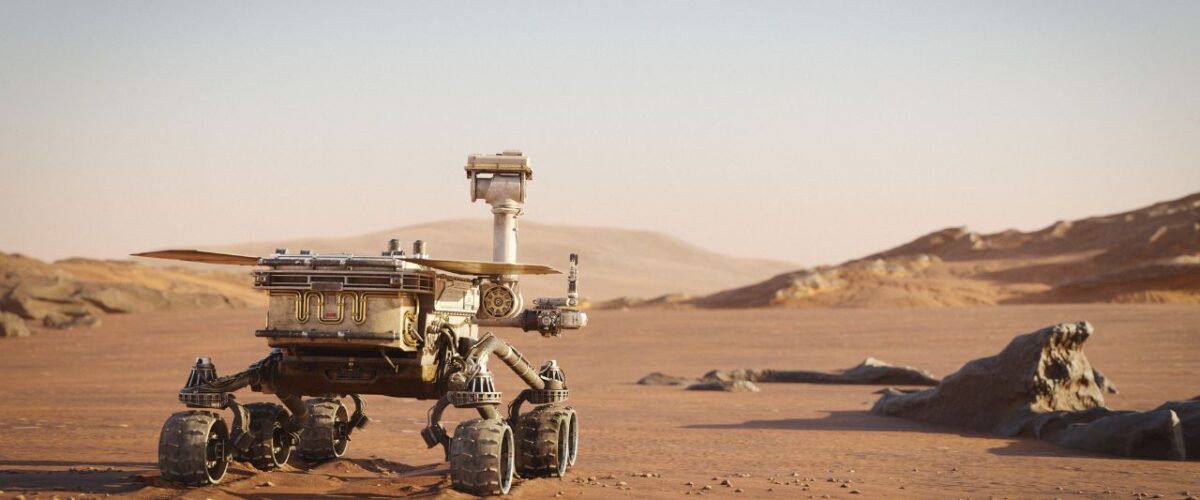
NASA has developed a technique based on machine learning that speeds up the process of identifying organic compounds by quickly examining samples collected by rovers on the surface of Mars.
The system has been educated by NASA scientists for almost ten years with the aim of teaching it to recognize organic compounds that the rover comes across. The rover may concentrate on detecting samples while on the surface and identifying patterns that might not be evident to humans by automating the identification process and relaying the data back to experts on Earth.
According to NASA data scientist Victoria Da Poian, “the more we do to optimize the data analysis, the more information and time scientists will have to interpret the data.” “By doing so, we can respond to outcomes much more quickly than we could have in the past and plan our next course of action as though we were with the rover.”
The system has been educated by NASA scientists for almost ten years with the aim of teaching it to recognize organic compounds that the rover comes across. The rover may concentrate on detecting samples while on the surface and identifying patterns that might not be evident to humans by automating the identification process and relaying the data back to experts on Earth.
According to NASA data scientist Victoria Da Poian, “the more we do to optimize the data analysis, the more information and time scientists will have to interpret the data.” “By doing so, we can respond to outcomes much more quickly than we could have in the past and plan our next course of action as though we were with the rover.”

The computer was given the task of finding instances of compounds that could exist on Mars after being trained to recognize them.The system will receive data from the MOMA equipment and produce predictions regarding the chemical makeup of a sample.It will be sent to Mars for the first time aboard the Rosalind Franklin rover during the European Space Agency-led mission, which is scheduled to launch no sooner than 2028.
The program will use data gathered by a Mars Organic Molecule Analyzer (MOMA) sensor to identify samples before returning them to Earth scientists for additional examination.
Xiang “Shawn” Li, a mass spectrometry scientist in the Planetary Environments lab at NASA Goddard’s Space Flight Center, said, “This machine learning algorithm can help us by quickly filtering the data and pointing out which data are likely to be the most interesting or important for us to examine.”
The program is just one of the numerous methods the rover uses to gather information about potential life on the Red Planet. In order to gather samples, the rover will drill 6.6 feet into the planet’s surface, which will be the lowest excavation site ever used by scientists.
According to Li, “exposure to radiation at the surface and cosmic rays that penetrate into the subsurface is more likely to destroy organic materials on Mars’ surface.” However, the majority of biological matter should be protected by two meters of depth. Thus, MOMA may be able to find preserved ancient organics, which would be a significant step in the search for extraterrestrial life.
The program will use data gathered by a Mars Organic Molecule Analyzer (MOMA) sensor to identify samples before returning them to Earth scientists for additional examination.
Xiang “Shawn” Li, a mass spectrometry scientist in the Planetary Environments lab at NASA Goddard’s Space Flight Center, said, “This machine learning algorithm can help us by quickly filtering the data and pointing out which data are likely to be the most interesting or important for us to examine.”
The program is just one of the numerous methods the rover uses to gather information about potential life on the Red Planet. In order to gather samples, the rover will drill 6.6 feet into the planet’s surface, which will be the lowest excavation site ever used by scientists.
According to Li, “exposure to radiation at the surface and cosmic rays that penetrate into the subsurface is more likely to destroy organic materials on Mars’ surface.” However, the majority of biological matter should be protected by two meters of depth. Thus, MOMA may be able to find preserved ancient organics, which would be a significant step in the search for extraterrestrial life.
- August 20, 2024
- By:A A
- Categories:Blog
- Tags: Artificial Intelligence, Machine Learning
- no comments

Post a Comment